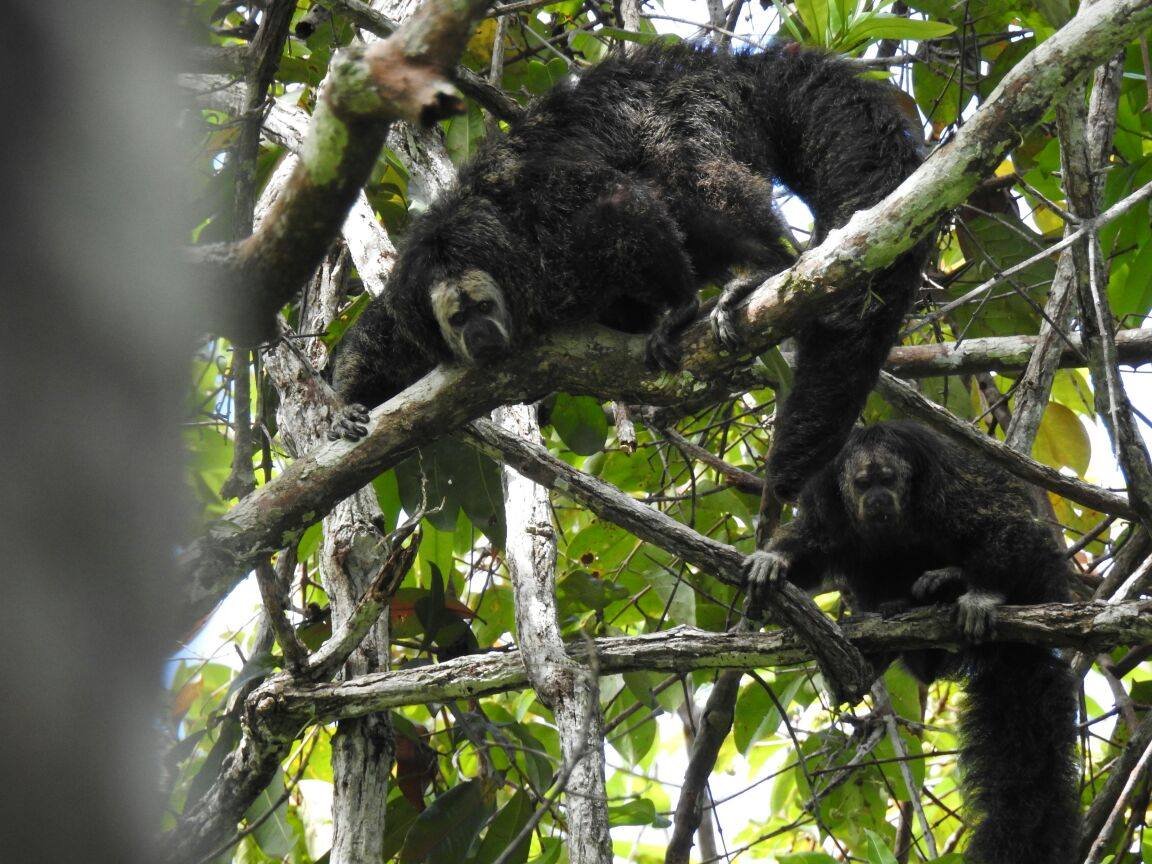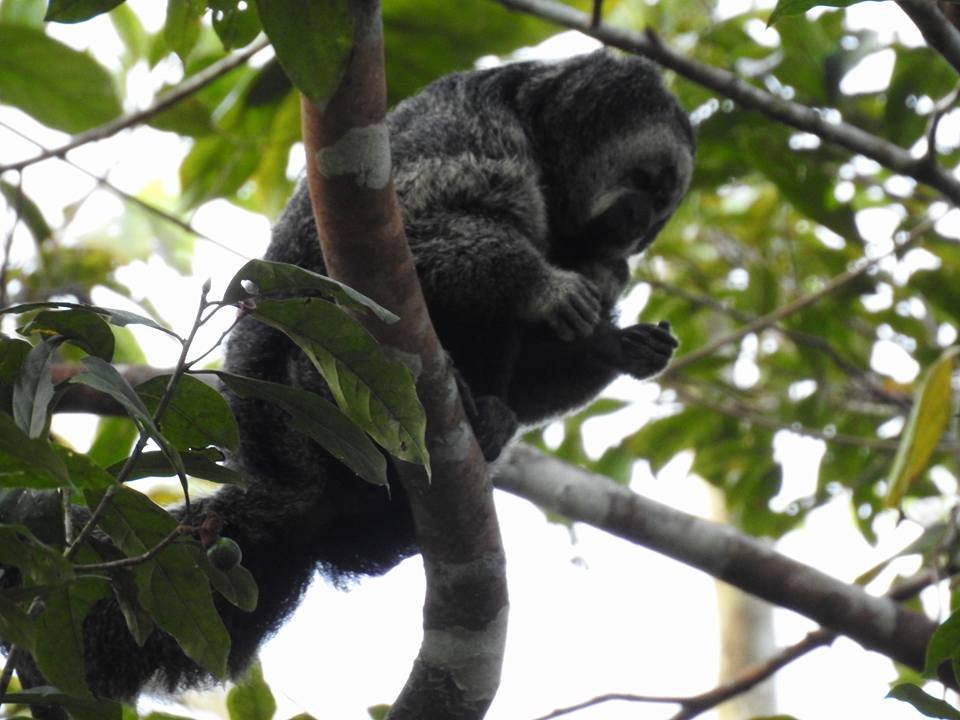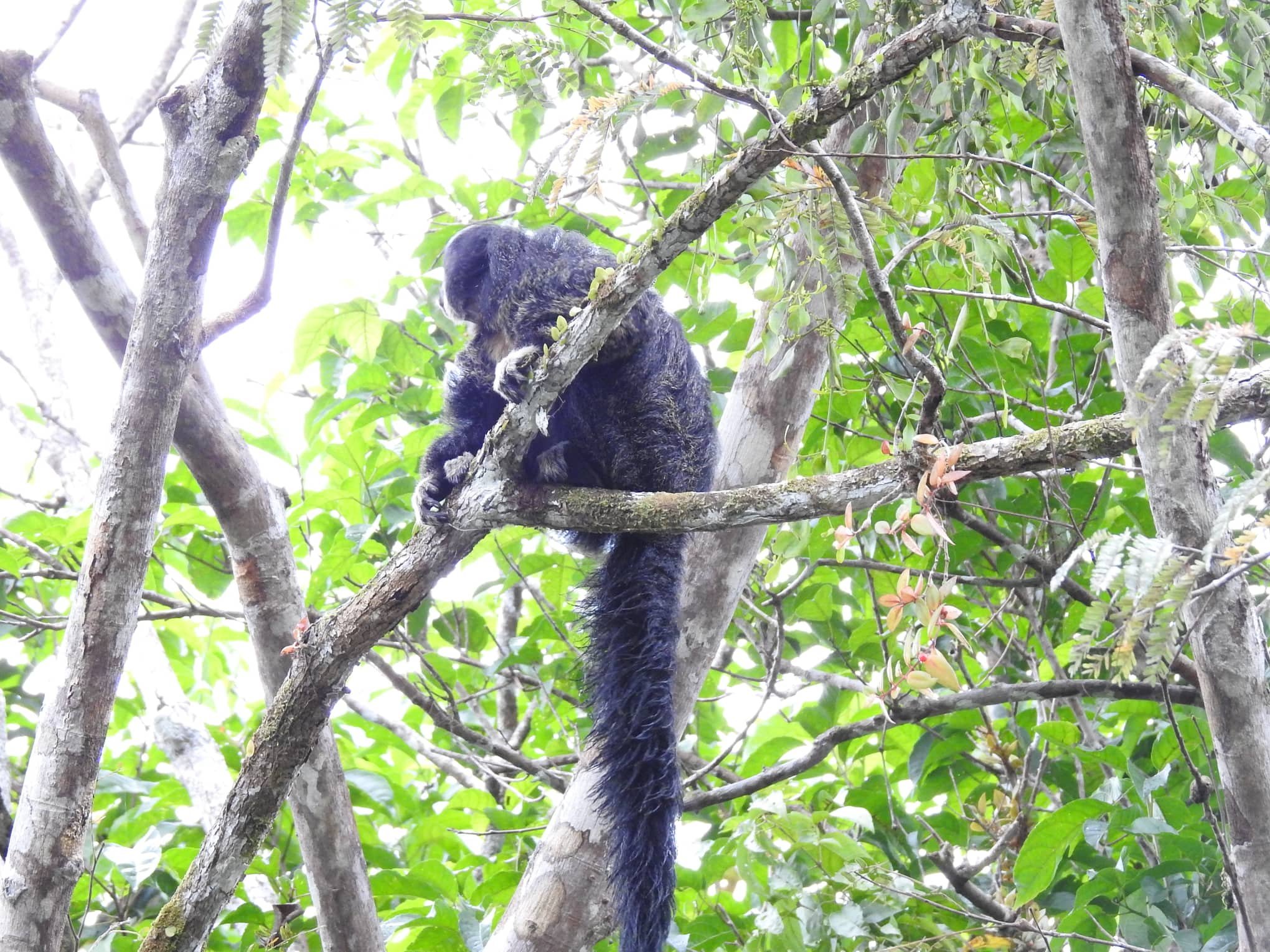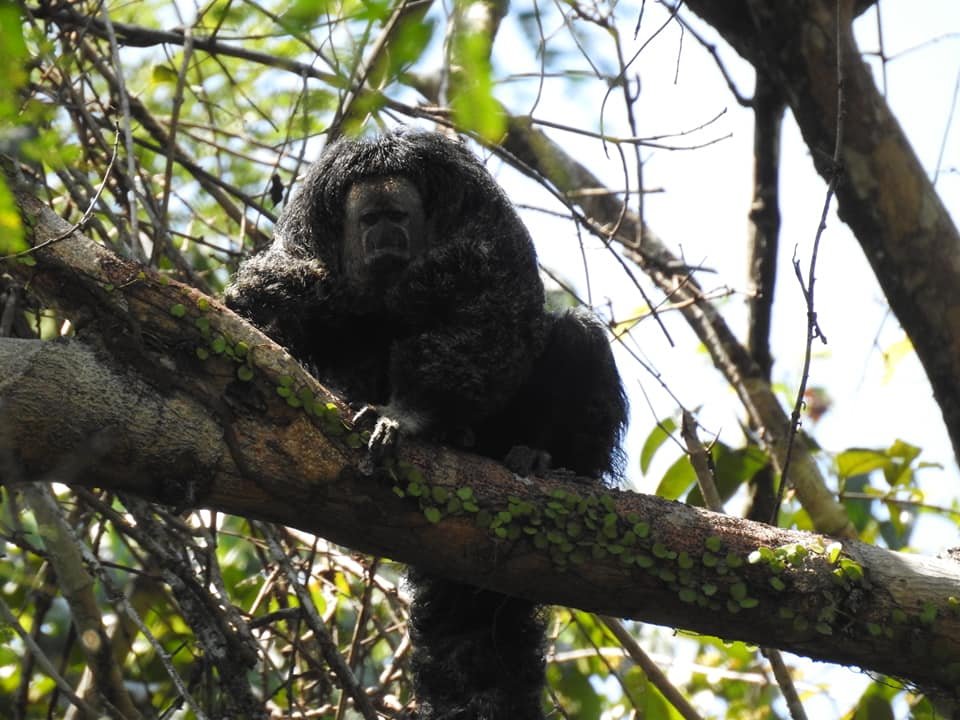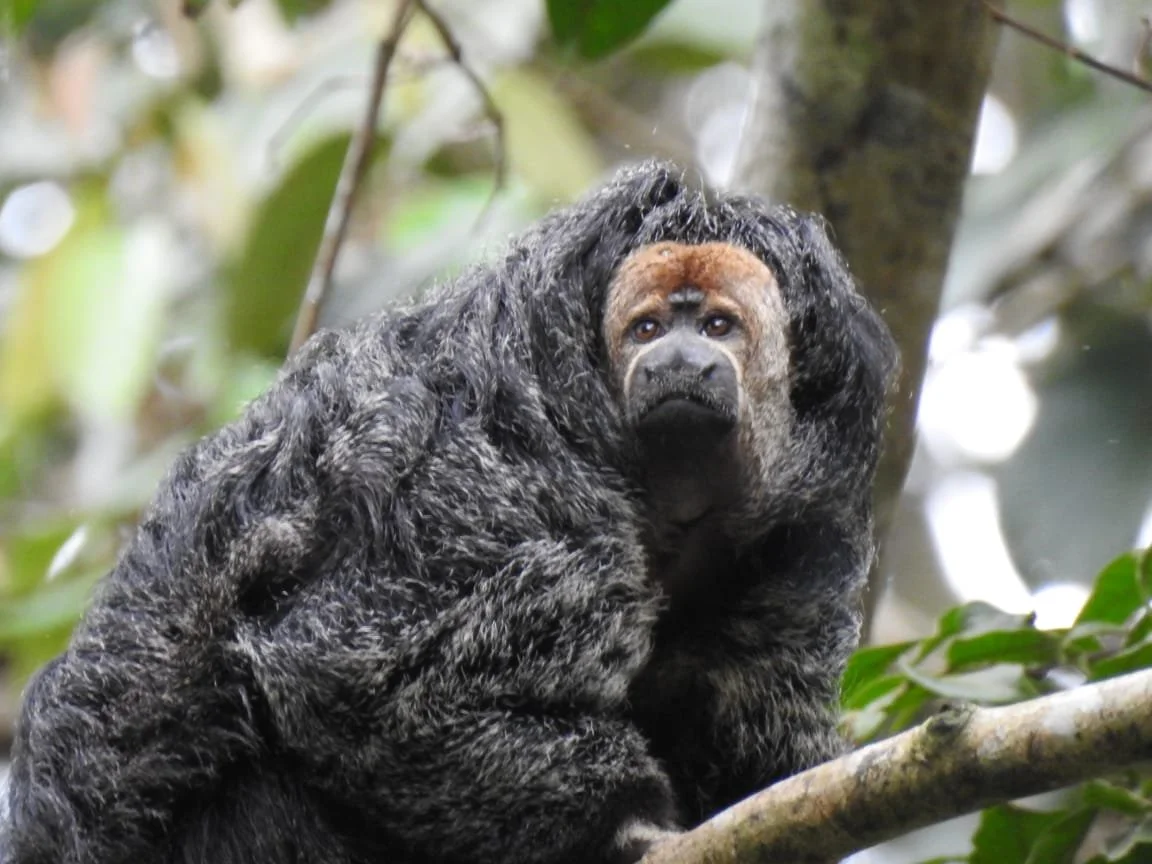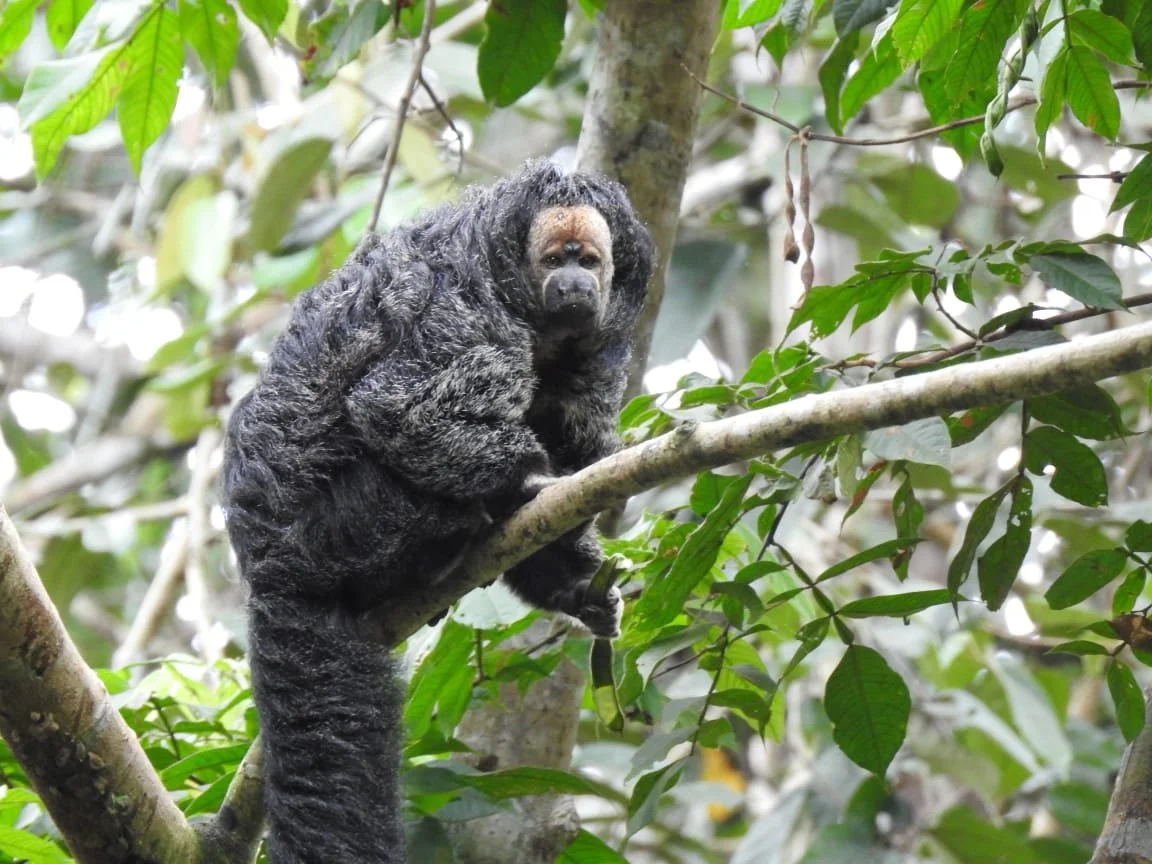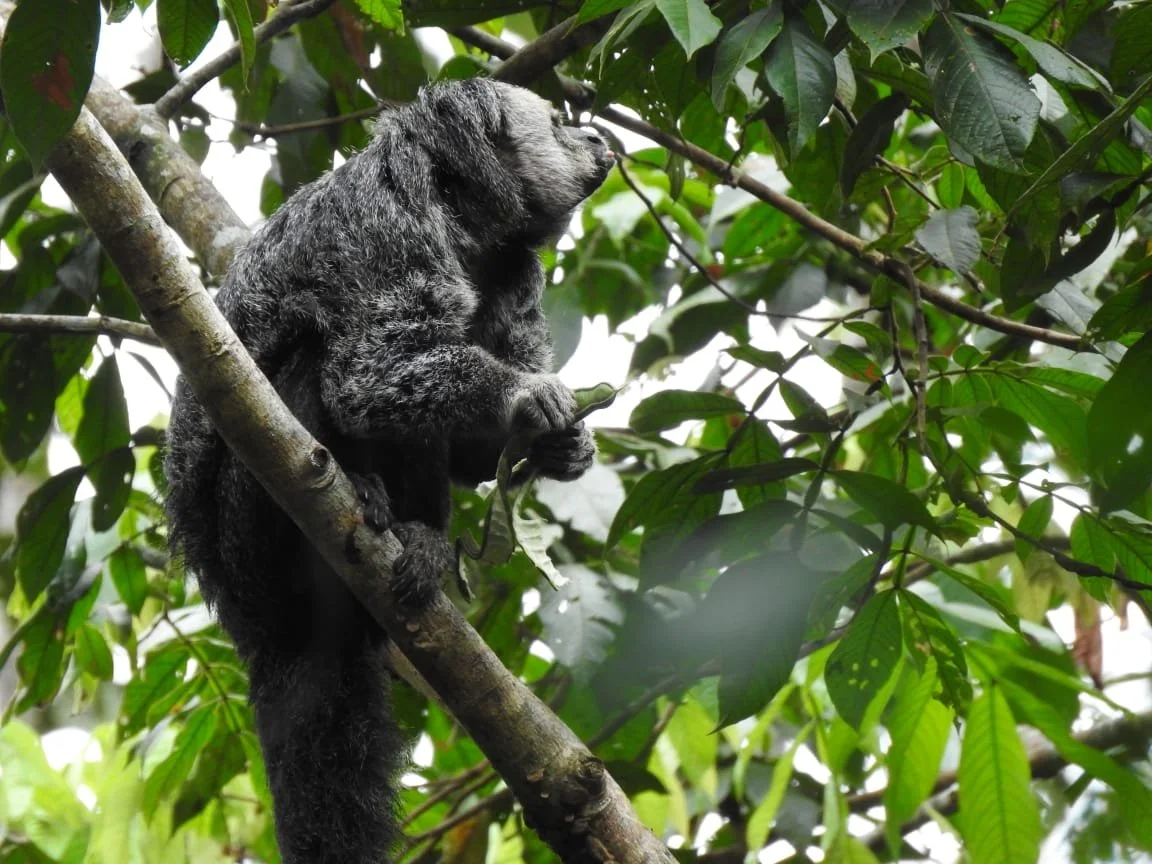The Monk Saki is characterized by its small size. The monkeys range from 12-16 inches 30-50 cm) with an equal length tail their bodies. They have rough , mostly black, fur with lighter colored hands and feet. They Have a partially bald face that is “hooded” with curly black hair on top and on the sides of their heads. Often, males are found with a yellowish stripe under neath their eyes. They have very thick heavy tails that are non prehensile, meaning they are unable to grasp objects although, this helps them by making them appear to be larger than they are to predators.
Monk sakis are usually found in the highest canopy of mature tropical rainforests in Northeastern Peru, in the Andes mountains. They rarely come to the bottom to avoid predators such as jaguars, ocelots, tayras, and large green anacondas. When spotted, the monk saki make a large alarm call to alert the group and help them escape.
The Monk saki are herbivores . Their diet consists of fruits, seeds, and insects and arthropods, like ants and spiders. Each source of food provides different sources of energy . For instance, fruits offer a quick source of energy, for things like swinging through the canopy. Seeds, on the other hand ,are a source of fat that release larger amounts of energy, although the digestion is slower. The monkeys are able to find a sufficient amount of food, in a small area without competing with other primates.
Monk sakis form tight nit families in groups of 4 to 6. They mate monogamously, and the female gestation period is about 170 days. Females usually give birth to one offspring every mating period. The young, clings to its mothers belly and as it grows moves to the back and eventually to the wild. T he monk saki have a 14-18 year life span.
The family usually stays within a 0.5 mile radius. The distance they travel and their size usually depends on the availability of fruits and seeds. It has been observed that monk sakis spend about 30% of their time foraging for food , 25% traveling through the forest and about 11% on the lookout for predators and other threats. Due to their shy nature they are not very social animals.


